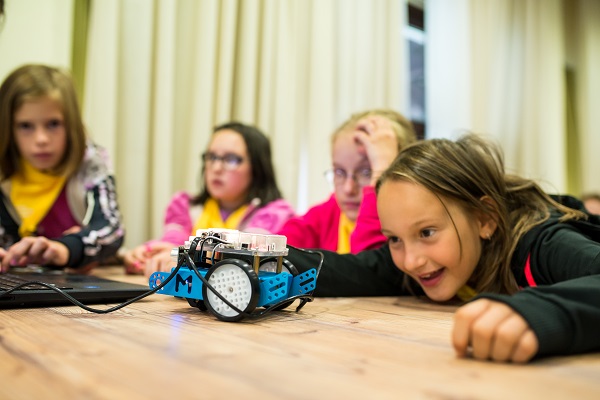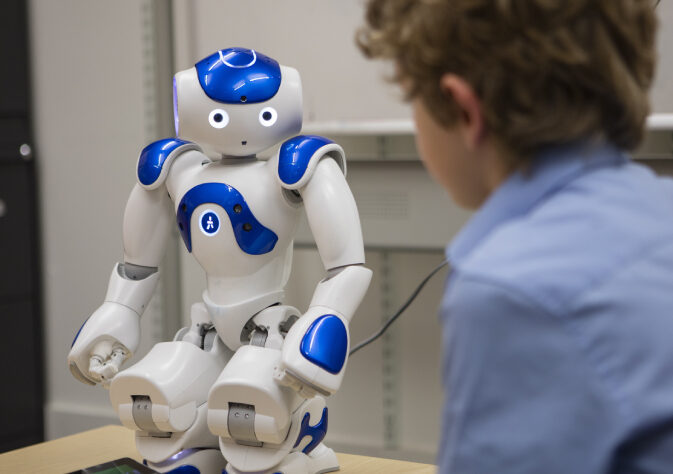A New Addition In School Curriculum
The age of robots is not far away. Even now, the use of robots is becoming more commonplace around us. Robots are already playing an intrinsic role in manufacturing facilities, hospitals, and so on. Robotics is an integral part of many cutting-edge fields, including aerospace engineering, computer science, and hardware design.
With the increasing presence of robots, it is not surprising that Robotics is making strides in education. Educational experts predict that it will become an intrinsic part of school education within the next decade. CBSE Affiliated schools in Chennai (https://www.babajividhyashram.org/) are already imparting Robotics as an ancillary subject to middle schoolers and higher secondary students. You can browse more here about the skills students need to become robotic engineers and other related details.
How Is Robotics Taught In Schools?
Robotics is a fun way to learn mathematical, physical, mechanical, and computer concepts. It is a great way to introduce STEM (Science, Technology, Engineering, and Mathematics) subjects to young learners. In fact, it is advantageous to teach STEM subjects as early as preschool age.
Educational robotics can be taught at all educational levels, from nursery and primary education to postgraduate studies. Educational robotics and constructivism are connected by the use of technological tools in the academic field. It is gaining importance in education and is used to assist students with special educational needs. Robotics projects require the collaboration of brilliant minds. Therefore, students can seek assistance from college homework help for their term papers and homework assignments.

The Goal & The Benefits Of Educational Robotics
The main goal of educational robotics is to help children understand the concepts and complex intricacies of STEM subjects and practically implement them. That said, the other goals include:
- Understanding and mastering the basics of programming language.
- Paying attention to subject diversity
- Improving their active participation in the learning process,
- Providing them with tools to reach their own goals.
- Developing reasoning abilities, intuitive logic, spatial perception, and fine motor skills.
- Helping learners become more proficient in learning abstract concepts.
- Improving their problem-solving abilities
Schools all over the world are realising the benefits of including Robotics in their curriculum. Robotics:
- Encourages children to think out of the box and is indirectly applicable to developing philosophical thinking skills.
- Helps students develop their skills and knowledge through the creation, assembly, and operation of robots.
- Improves children’s ability to solve problems and perform mathematical operations and reason.
- Encourages them to develop their engineering intuition and problem-solving skills through the construction of robots.
- Fosters creativity, cognitive ability increases student engagement and the ability to think creatively,
- Increases their attention span, designing and teamwork abilities and promotes cooperation and collaboration.
- Helps students with special needs such as autism spectrum disorders to develop communication and social skills.
- Brings students who are unable to attend school into the classroom via video conferencing.
Robotics In Education Today And In The Next Ten Years
Robotics is everywhere, and famous schools in Chennai have included robotics as an ancillary curriculum. The use of robotics in educational centres has been demonstrated in several studies.
Robots have been used in educational centres to help students internalise enriching content and develop real-world and career-based skills. Besides, the development of robots in education influences the development of students at any stage of their academic careers.
Educational robotics can encourage creativity and exploration naturally and playfully rather than in a dull and compulsive way. The science allows students to create something and decide what they want it to do. Since robotics is an all-in-one STEM learning experience for students of all ages, schools today are thinking of various ways to encourage student participation.
For example, a robot named Elias has been used in schools in Finland to teach language and mathematics. It can dance and communicate in 23 different languages. Elias is a good example of properly using a robot in the classroom, but it is not perfect.
However, in the next ten years, robotics will become a major factor in classrooms worldwide. According to Sir Anthony Seldon, future AI tutors and robots will accompany students throughout their entire time in school. He also believes that teaching robots will read children’s facial expressions and brains within ten years.
Guidelines For Implementing Robotics In The Classroom
It’s important to implement robotics properly to get the best results from them. Following these four basic guidelines will help you plan the use of robots in the classroom:
- Robotics clubs
Robotics clubs are a relatively simple and low-cost way to get students involved in STEM. The club can serve as a platform for students who want to be successful in robotics. They can be encouraged to learn how to communicate with one another and showcase their inventions.
- Robotics camps
Robotics camps provide more than just academic opportunities. Summer camps in robotics provide students with the opportunity to explore a unique interest in something they might not otherwise have the opportunity to explore. It also provides them with a unique environment to learn new skills.
- Other mediums
The best robotics kits available today include step-by-step instructions and a variety of YouTube tutorials, online forums, and how-tos. Many sources offer online robotics lessons and STEM summer camps and highly qualified instructors to teach classes.
An important tip to keep in mind:
Do not allow children to become too attached to the robot. Human interaction is important, so teachers should help children understand that the robot is not a social companion but rather there to help them learn. So it’s important to follow ethical guidelines and ensure that the robots are not abused.
Conclusion:
Robotics is an exciting field that provides opportunities for teamwork and collaboration. There is a ready market for robotics students and graduates, and many companies are looking for students to work for them. Students can also discover their unique talents. Young robotics engineers need patience, meticulousness, problem-solving skills, and the ability to work with others. But robots never tire of being patient so that students can learn at their own pace. We must use robots responsibly and adhere to all applicable ethical guidelines and standards.

